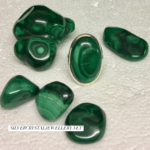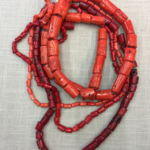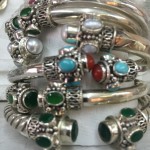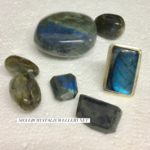It is very hard to beat the finesse and the history of turquoise. Steeped in history and mystery, it is a really exciting stone.
 The story of “Turquoise” goes back in time more than 6000 years. Archaeological and legendary indications go beyond the Christian period of five thousand years. The captivating Turquoise stone was discovered in tombs of ancient Egypt, especially the four bracelets of Queen Zar were found on her mummified arm, with the captivating Turquoise.
The story of “Turquoise” goes back in time more than 6000 years. Archaeological and legendary indications go beyond the Christian period of five thousand years. The captivating Turquoise stone was discovered in tombs of ancient Egypt, especially the four bracelets of Queen Zar were found on her mummified arm, with the captivating Turquoise.
These stones date back to the time of the second rule of the first dynasty of Egypt, sometime in 5500 BC Both Aristotle and Pliny mentions turquoise. Marco Polo wrote about the turquoise as well. Turquoise has always been regarded as the cornerstone of life.
In addition, it has a very old history of over 1000 years with the Americans who made extensive use of turquoise in safety and therapeutic measures. Turquoise was used in religious rituals, art, conducting business, a treaty of consultations, and jewelry. The use of Turquoise as a therapeutic stone goes well, as has been used for people who suffered from headaches and eye problems, and fever and insect bites.
Turquoise Jewelry used to be crushed into powder, which was used to dilute and as a drink for treating stomach disorders. In addition, Turquoise has many subtle features. It is a stone that is invigorating to ease the anxiety of thinking, to facilitate the processing of problems, reduce the pressure of a hectic life, and encourage friendships.
Turquoise is famous for its protection and many traditions impose carrying a turquoise stone and at any time.
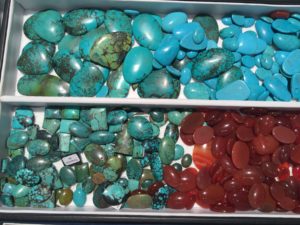 Turquoise is found in North America arid regions of Arizona and New Mexico. Turquoise is also found in Persia, China, Egypt, Iran and Turkey.
Turquoise is found in North America arid regions of Arizona and New Mexico. Turquoise is also found in Persia, China, Egypt, Iran and Turkey.
A majority of turquoise from China are covered with wax. The paraffin treatment strengthens and stabilizes color. However, we only affect the surface. Turquoise, to some extent, can be absorbing and crumbly and is generally not appropriate for the jewelry when it is processed.
There are several procedures in the treatment of turquoise. The stabilization is a treatment that allows the use of a resinous material. The procedure uses force and high temperature to complete the minutes of the openings in the stone with plastic resin. Once the turquoise is cured, the product turns into a treaty stone is hard enough to cut, and Polish.
The reconstituted Turquoise Jewelry made with ground turquoise is actually lower from a stone that is molded with epoxy resin. This color is pressed and stones the forms. They appear, but not the value of a real stone. A procedure also known as the ‘Block’ implies a concoction of plastic resin and colored blocks in the cast. There is no real turquoise in that combination. It is totally artificial and labeled as imitation.
By: Double Dee Deals Article Directory: http://www.articledashboard.com
Facts and Beliefs of Turquoise Necklace
It requires no great leap of imagination to understand why turquoise has been mentioned as such. Like the sky could be a Pacific storm, or blue, turquoise, might seem to express different moods
Facts and Trivia about the gemstone Turquoise
As chemical reaction occurs, turquoise is produced. This simplified explanation for the entire process happens for millions of years and happens in suitable conditions only.
Turquoise – the facts. Prolonged exposure to direct sunlight may discolour or dehydrate turquoise. Turquoise should not be worn to a beach or other sun-bathed environment. After use, turquoise should be gently cleaned with a soft cloth
